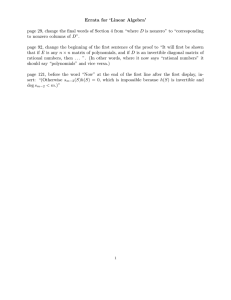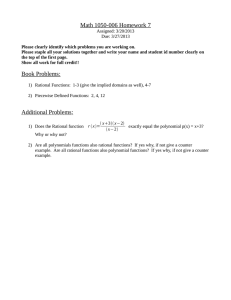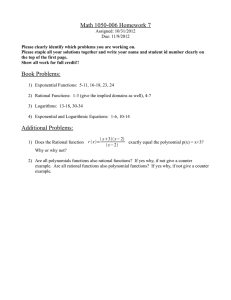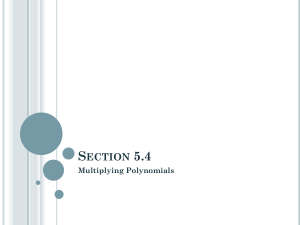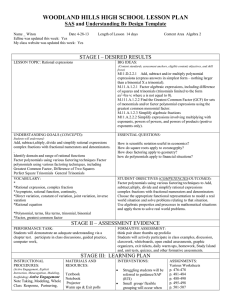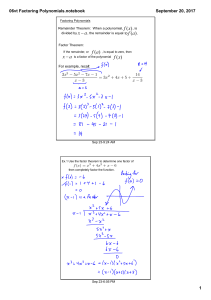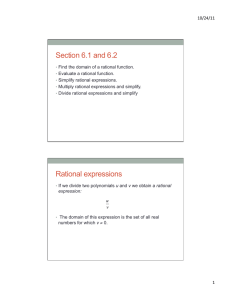MATH 1100 – A QUICK REVIEW OF ALGEBRA
advertisement
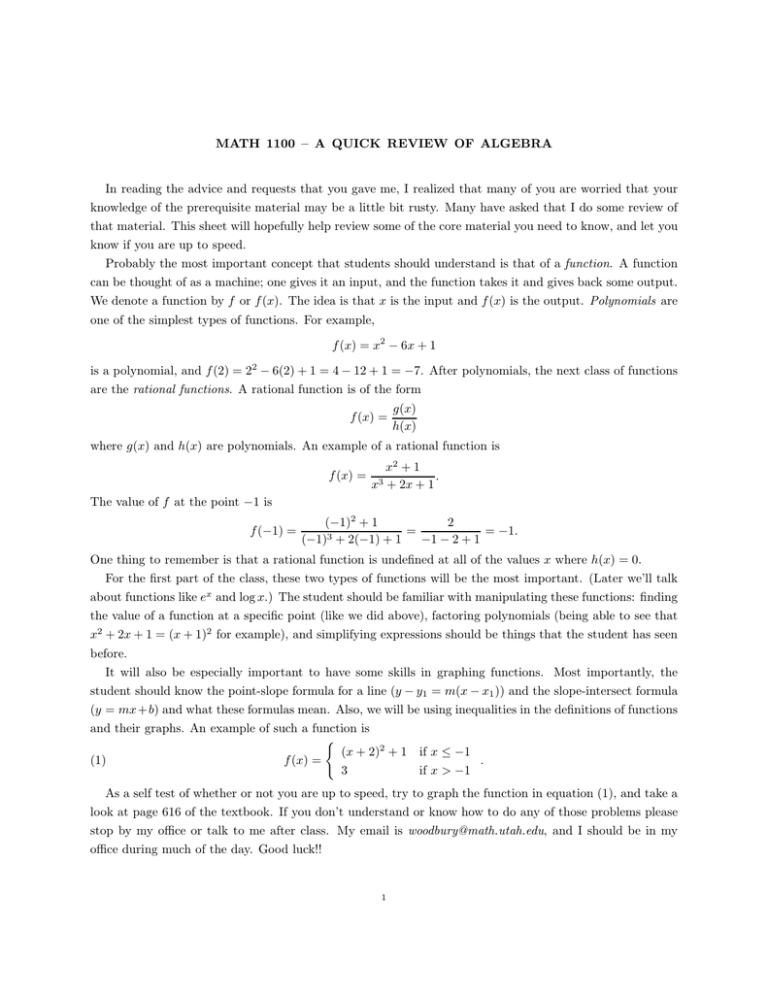
MATH 1100 – A QUICK REVIEW OF ALGEBRA In reading the advice and requests that you gave me, I realized that many of you are worried that your knowledge of the prerequisite material may be a little bit rusty. Many have asked that I do some review of that material. This sheet will hopefully help review some of the core material you need to know, and let you know if you are up to speed. Probably the most important concept that students should understand is that of a function. A function can be thought of as a machine; one gives it an input, and the function takes it and gives back some output. We denote a function by f or f (x). The idea is that x is the input and f (x) is the output. Polynomials are one of the simplest types of functions. For example, f (x) = x2 − 6x + 1 is a polynomial, and f (2) = 22 − 6(2) + 1 = 4 − 12 + 1 = −7. After polynomials, the next class of functions are the rational functions. A rational function is of the form f (x) = g(x) h(x) where g(x) and h(x) are polynomials. An example of a rational function is f (x) = x3 x2 + 1 . + 2x + 1 The value of f at the point −1 is f (−1) = (−1)2 + 1 2 = = −1. 3 (−1) + 2(−1) + 1 −1 − 2 + 1 One thing to remember is that a rational function is undefined at all of the values x where h(x) = 0. For the first part of the class, these two types of functions will be the most important. (Later we’ll talk about functions like ex and log x.) The student should be familiar with manipulating these functions: finding the value of a function at a specific point (like we did above), factoring polynomials (being able to see that x2 + 2x + 1 = (x + 1)2 for example), and simplifying expressions should be things that the student has seen before. It will also be especially important to have some skills in graphing functions. Most importantly, the student should know the point-slope formula for a line (y − y1 = m(x − x1 )) and the slope-intersect formula (y = mx+ b) and what these formulas mean. Also, we will be using inequalities in the definitions of functions and their graphs. An example of such a function is ( (x + 2)2 + 1 if x ≤ −1 (1) f (x) = . 3 if x > −1 As a self test of whether or not you are up to speed, try to graph the function in equation (1), and take a look at page 616 of the textbook. If you don’t understand or know how to do any of those problems please stop by my office or talk to me after class. My email is woodbury@math.utah.edu, and I should be in my office during much of the day. Good luck!! 1
